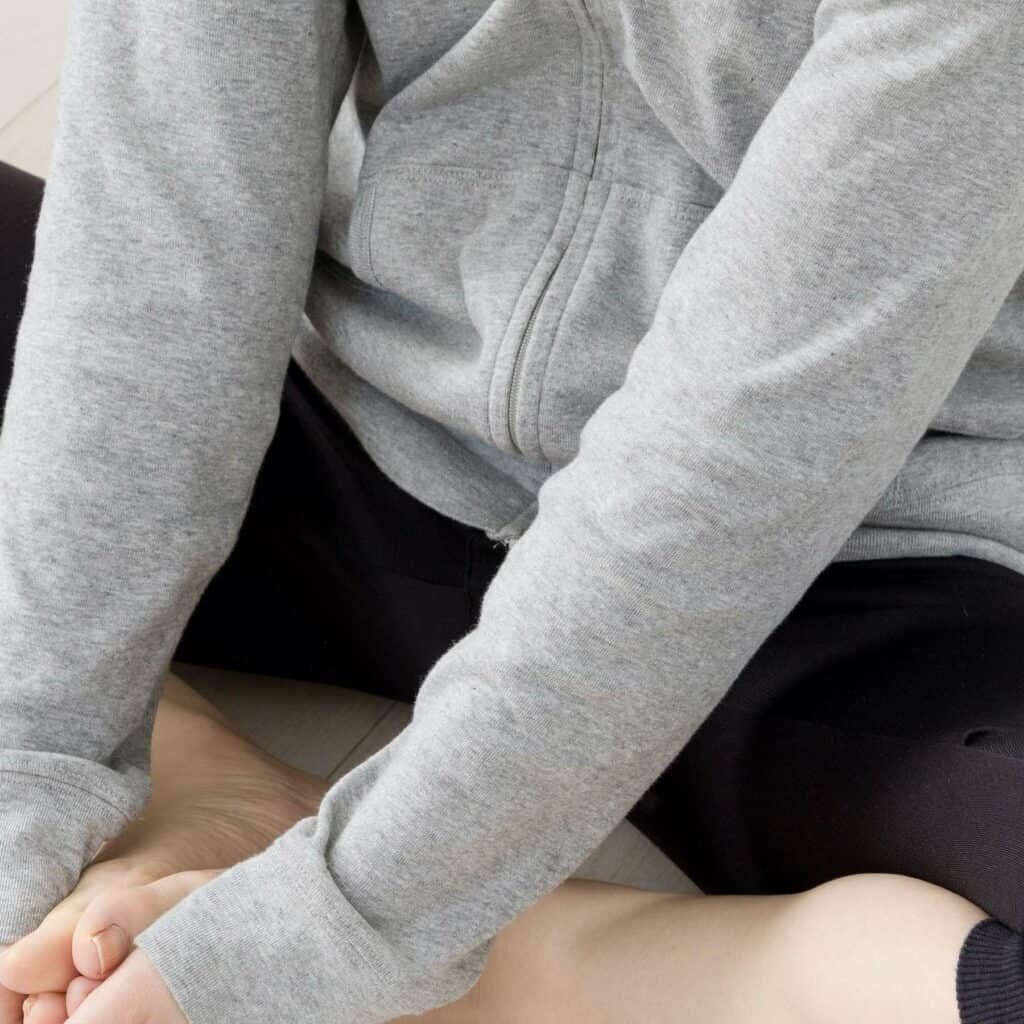
Pelvic Floor Exercises for Menopause: Why You Should Be Doing Them
Menopause brings lots of changes to your body, but one of the least talked about and most challenging is the weakening of your pelvic floor. Pelvic floor laxity can cause urinary incontinence, uterine and bladder prolapse (bulging into the vagina), intimacy problems, and more.
In this post, we’ll talk about the benefits of pelvic floor exercises for menopause symptoms and how to do them right at home.
What Is The Pelvic Floor?
The pelvic floor is the lowest part of your pelvis: the muscles, ligaments and tissues that support and aid in the functioning of your bladder, uterus, rectum, and vagina.
It is not uncommon for the pelvic floor to weaken during the strain of pregnancy and childbirth, but laxity also occurs during menopause when the estrogen decline that women experience can cause the tissues to thin, contributing to the weakening of the pelvic floor.
How Do Pelvic Floor Exercises Help Menopause Symptoms?
It’s well established that exercise of your overall body has many benefits to your health. But, exercises targeted to strengthen or relax your pelvic floor muscles can provide additional benefit for women who are experiencing menopause related symptoms including urinary incontinence, vaginal or pelvic pain during sex. These exercises can also help prevent and/or improve bladder or uterine prolapse.
Pelvic floor exercises allow you to better control your bladder, prevent mild to moderate cases of incontinence, and prevent or delay prolapse. The American College of Physicians recommends pelvic floor training as a first-line treatment for unrinary incontinence.
According to Memorial Sloan Kettering Cancer Center, pelvic floor exercises also help lessen pain during sex, problems with arousal and vaginal dryness by relaxing the vaginal muscles and improving circulation to the area, which can increase arousal and lubrication.
A 2018 review study in the journal Clinical Interventions in Aging found that pelvic floor training helped improve women’s quality of life. That’s very important. The researchers found that urinary incontinence can cause women to change their lifestyles so much that they can become socially isolated, avoid intimacy, and become depressed.
Another review study concluded that pelvic floor training can be so effective at reducing the number of bladder leakage episodes and the amount of leakage experienced. that it can be considered a cure for stress urinary incontinence. So pelvic floor exercises can be a relatively simple way to dramatically improve your health.
Pelvic Floor Exercises You Can Do Right At Home
Kegels
Kegel exercises are the most well known and best exercise for tightening the pelvic floor. They are particularly helpful for bladder problems. Kegel exercises involve contracting and releasing the muscles in your vagina and bladder by imagining that you’re peeing, and with the same muscles it takes to stop the flow, tighten the muscles for 8 seconds, then release for 10 seconds. Do this for 10 repetitions, three times a day. The key is to focus on the muscles in your vagina, bladder and anus. If you can feel them tighten, you’re doing the exercises right.
There are training devices to help, like the KegelSmart by Intimina (note: I do not have an affiliate link – I’m just sharing information) which is a safe, non-surgical little device that registers the strength of every muscle contraction and automatically sets itself to a different level based on your progress. It comes with a phone app which can track your progress and help you do the exercises more effectively.
With stronger pelvic floor muscles, you’ll feel more sensations when you have sex and you’ll feel more in control of your bladder muscles.
Squats
Squats are good for your buttocks and thighs, but they are also an effective way to strengthen your pelvic floor. Sand upright with your feet shoulder-width apart, with your feet pointing outwards. With your back straight and leaning slightly forward, bend your knees and squat as low as you’re comfortable with. While you are in this position, try to focus on how your pelvic muscles tighten. Do this 10 times, once a day.
Bridges
Start by lying flat on the floor with your knees bent and your feet are flat on the ground). Take a deep breath and raise your hips up forming a small bridge, while squeezing your pelvic floor. Holding for 2-3 seconds. Repeat 10 times.
Split Table Top
This is a familiar exercise for those who have done Pilates. Start with your back flat on the floor. Bend your knees at a 90-degree angle with your feet up in the air. It should look like you’re sitting on a chair. While squeezing your pelvic muscles (similar to the Kegels), slowly spread your legs apart, pushing them as far as you’re comfortable with and bring your knees together again. Repeat 10 times.
Bird Dog
This exercise requires a little bit of balance but it’s a good one to learn because it also strengthens the muscles in your back. Start with your hands and knees on the floor like a dog. Keep your back and neck straight and your knees hips-width apart. Slowly raise your right arm and left leg out, straightening them. Hold for 2 seconds before slowly bringing them back to the starting position. Repeat with the left arm and right leg. Do this 10 times.
It’s important to be patient with these exercises. It can take weeks to months to get results, but the daily efforts do add up. That said, if you’ve been consistent for several months and need more help, ask your doctor about pelvic floor physical therapy.
Pelvic floor physical therapy involves biofeedback and exercises to encourage relaxation and strengthening of the muscles of the lower pelvis. Biofeedback sensors are placed on the vaginal wall to measure muscle tone and the strength of muscle contractions, which are then printed on a machine for you to see. Between visits, you practice your exercises at home, then you can see your improvement on the machine on your next visit. Sometimes the therapist will use a massage technique called myofascial release which helps stretch the connective tissue in your pelvic region.
Pelvic Floor Exercises For Menopause: Final Thoughts
Strengthen your pelvic floor muscles with targeted exercises can help you manage or prevent physical problems such as incontinence, bladder or uterine prolapse, as well as help improve your sexual health and pleasure and overall quality of life.
PS. This information is from Chapter 3: Remedies inside Mastering Menopause at The Insider MD: Women’s Health Simplified. Sign on today and learn more physician curated tips for how you can take charge of your health and thrive through menopause and beyond!

MEET DR. ELLEN
My mission is to bring you the most up-to-date, proven medical information, simplified, so you can make confident, educated decisions about your health.
I'M LOOKING FOR...
grab your 5 day
quick start guide



